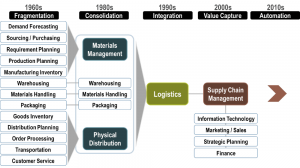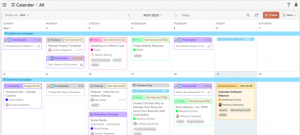From engaging under-served customers, to emphasizing ethical AI, center-out architectures, and addressing the distributed work environment.
With its announcement this week of Value Finder, customer engagement platform Pega aims to help brands drive value from under-served customers. While messaging core customer segments about current products, brands can overlook the opportunity to reach large numbers of less engaged customers with relevant messages.
Selling to the 80%. Matt Nolan, Senior Director of Product Marketing, told us: “Value Finder is a new AI-driven capability inside our Customer Decision Hub. Instead of looking at campaigns and telling you which customers to target — like every other piece of marketing technology software — Value Finder looks at each of your individual customers and tells you what kinds of actions those people need.” Customer Decision Hub is Pega’s solution for determining next-best-actions based on AI modeling of individual customers’ behaviors.
“Teams can build out new offers, messages and creative that really resonate with those individuals, not just the top 20% of your customers but the other 80%,” Nolan explained. “It’s building things for the 80% rather than trying to push them into the things you regularly sell.”
Value Finder works by creating propensity scores for individual customers at scale. Serving enterprise brands, that can mean analysing millions of customers and thousands of products, Nolan said. “It breaks them down into three categories. Customers who have plenty of relevant actions (your top 20%), customers who have relevant actions but are blocked, and customers that have no relevant actions at all.” Value Finder aims at finding value in those last two categories (“blocked” customers are those that have been filtered out of a target segment by rules like low CLV, or geographic constraints: Value Finder alerts brands to those rules, which can then be reviewed and reconsidered).
Positioning for the new business environment. Although Pega offers marketing, sales, service and customer decisioning tools in its Pega Infinity platform, and serves enterprise customers like American Express, Cisco and Pfizer, its approach to customer engagement remains very different from Adobe, Oracle or Salesforce — likely because its roots are in AI-driven, case-based Business Process Management, where it remains one of the leading vendors.
We asked Nolan and Don Schuerman, CTO and VP of Product Strategy and Marketing, how Pega and its customers are responding to the challenges of 2020.
Ethical AI. On the minds of many marketers in 2020 is the need reflect who their customers are in their messaging and go-to-market strategies.Earlier this year, Pega launched Ethical Bias Check within its Customer Decision Hub, aimed at eliminating hidden biases in AI models. Brands tend to be aware of potential bias in, for example, demographic fields in their AI models — but “bias can tend to sneak in anyway,” said Nolan.
This can be evident when campaign results are reviews: “At Pega, we try to do this pro-actively,” said Nolan. “We give you a simulation capability, and if the results show you skewing in a direction that could be considered bias, we throw up an alert.”
Center-out architecture. With digital transformation raging across even business not previously digital-first, there has been a tendency towards what Schuerman calls a “front-end focused approach: “We’re going to build a mobile app, or a new campaign landing page. This tends to lead to disjointed customer experiences.” For example, a mobile app for booking appointments which, because it’s not connected to the rest of the business, is actually ill-informed about when and where appointments are available.
“Or,” Schuerman continued, “they build these really big data-heavy projects like data lakes or warehouses with service layers added in, but after going two, three or four years on a project like that, you haven’t actually changed anything in your customer’s experience. We’ve been advocating for a center-out approach.”
Instead of starting with the front- or back-end, beginning in the center means understanding not only how to engage with customers effectively, but also how to automate that work so that it can be executed at scale: “What’s the process automation and case management you need to pull together to make it happen?”
A distributed work environment. As part of digital transformation, Schuerman sees work becoming increasingly distributed, not just through remote working structures, but also through distributed micro-services architectures, and distributed partner eco-systems (he cites open banking as an example).
“With that increasing distribution, which is really powerful, you have to be able to weave it together into something that’s actually coherent for a customer or an employee,” said Schuerman. Pega launched Process Fabric as a center-out business architecture, designed to combine processes living across a variety of micro-services, some outside the business, into a unified workflow. An “interwoven” worklist allows employees to see all relevant processes in one place, regardless of which system the work is being done in.
Managing change. The concepts Schuerman describes require a rethinking of customer engagement processes, not just the layering in of new, out-of-the-box software. “We’ve been spending a lot of time on the intersection of design thinking — understanding a problem and innovating a solution for it — and low code. How do you empower people to build the software they want?”
This does require some granular analyses: “You need to understand what we call the ‘micro-journey,’ that chunk of the customer journey you want to impact, and the outcome it’s tied to. You need to understand personas, and what systems and channels they are going to use, and you need to understand the data and how it will work with your existing legacy systems. If you can get those three things nailed down, you can get a cross-functional team together and start innovating on what a process could look like, what could an experience look like.” Pega’s low code approach is designed to speed the steps from conceptual innovation to actual results.
The “as-a-Service” experience. The Pega worldview may not seem to be a fit for traditional marketing and customer engagement strategies, even with the radical changes in everyday life and the business environment. We asked Schuerman where receptive customers were to be found.
“Obviously, we engage with the enterprise,” said Schuerman. “We engage with organizations that have global scale and a large customer base, because they already have this entrenched complexity and need to figure out how to solve it. We also engage with organizations that are really service providers.” Banks, insurance providers and health-plan providers are examples. Cisco can be seen as a service provider: “Their job is not to put routers on palettes and ship them to people; their job is to connect people to networks. That’s a service.”
Companies making the “as-a-Service” transition, he said, “need to be very pro-active in how they engage with their clients. They need a digital platform which will pull together the different technologies, Pega and others, that are needed to provide that service experience.
This story first appeared on MarTech Today.
Marketing Land – Internet Marketing News, Strategies & Tips
(20)
Report Post






